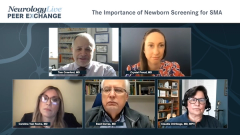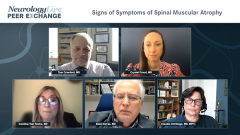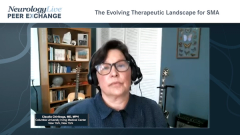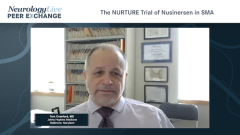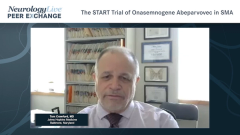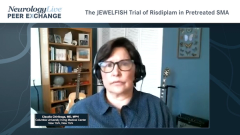
Genetic Testing and Diagnostic Delay in SMA
Basil Darras, MD considers the impact of genetic testing for SMN1 deletion and SMN2 copy numbers in potential patients and discusses best practices to prevent diagnostic delay.
Episodes in this series

Crystal Proud, MD: Patients are presenting to your office with these histories, and you are identifying these abnormalities on a physical examination. Basil, could you walk us through what you would then pursue, as far as testing goes?
Basil Darras, MD: Yes, I would be happy to, Crystal. In the year of…sequencing and 100 gene panels, my advice is to just focus on single-gene testing in SMA [spinal muscular atrophy]. For example, if there are newborns who had a positive screening test, we see them and we do confirmatory testing. We do SMN1 testing, deletion, and sequencing as necessary, and we evaluate the SMN2 copy number. I am saying this because I recently had an experience with somebody who was seen in another state close to us, and the neurologist ran a motor neuron panel. They were waiting for 2 months to get the results. Even by then, they didn’t know the results of the SMN testing. A lot of time went by without a diagnosis, and this was at a time where the child was losing motor neurons in the spinal cord. I think it is important to remember that if you suspect SMA, you should go directly to the classic SMN1 deletion testing and SMN2 copy number.
If you get a result that looks as if the child who seems to have SMA has a carrier genotype, meaning he has 1 copy of SMN1, it is important to do a sequencing of the second allele, although I think that at most laboratories these days they do both. I do not think that is a major issue at this point. Knowing the SMN2 copy number has some usefulness. We know that most babies have type 1 SMA—about 80%—and they have 2 copies of SMN2. A small percentage of patients have 1 copy, and then another 10% or so have 3 copies. Most kids who develop SMA type 2 have 3 copies of SMN2. Patients who are able to walk have either 3 or 4 copies of SMN2, or more. You can have 3 copies of SMN2 and have a patient who has type 1, type 2, or type 3 SMA. That is where we have a lot of overlap with the different subtypes.
This is why it is very important to predict the phenotype in the beginning. I think it is important to know the estimated copy number because within a particular subtype, we have a baby; he looks to have type 1 SMA. The ones who have 3 copies, in general, seem to be somewhat stronger than the ones who have 2 copies. If a type 3 child has 4 copies, they are most probably stronger than the child who has 3 copies of SMN2. I do find some predictive value within a particular subtype of SMA. It is a major phenotypic modifier, so I think it is important to have that information, and it is also important for those newborns, because even if they have 4 copies—we will probably get back to that. I think it is important to treat even the babies who have 4 copies of SMN2. Again, my advice is to send requests for specific testing for SMN2 as soon as possible. I have not done any EMG [electromyography] testing recently. We have done that test a few times when kids were in the ICU [intensive care unit] and could not be extubated, so SMA was suspected. I have not done a muscle biopsy since 1987, so we go directly to genetic testing these days, and it can be done very easily. It is commercially available, and sometimes it is done free of charge.
Crystal Proud, MD: That is a great point to bring up; these sponsored testing programs that are available right now help facilitate a reduction in the timing that can be lost when you are pursuing a diagnostic odyssey for these children. That has made testing exponentially easier than it might have been in the past, as waiting for even just insurance authorization for some of those tests can be difficult.
Thank you for watching this NeurologyLive® Peer Exchange. If you enjoyed the content, please subscribe to our e-newsletters to receive upcoming Peer Exchanges and other great content right in your inbox.
Transcript Edited for Clarity
Newsletter
Keep your finger on the pulse of neurology—subscribe to NeurologyLive for expert interviews, new data, and breakthrough treatment updates.

